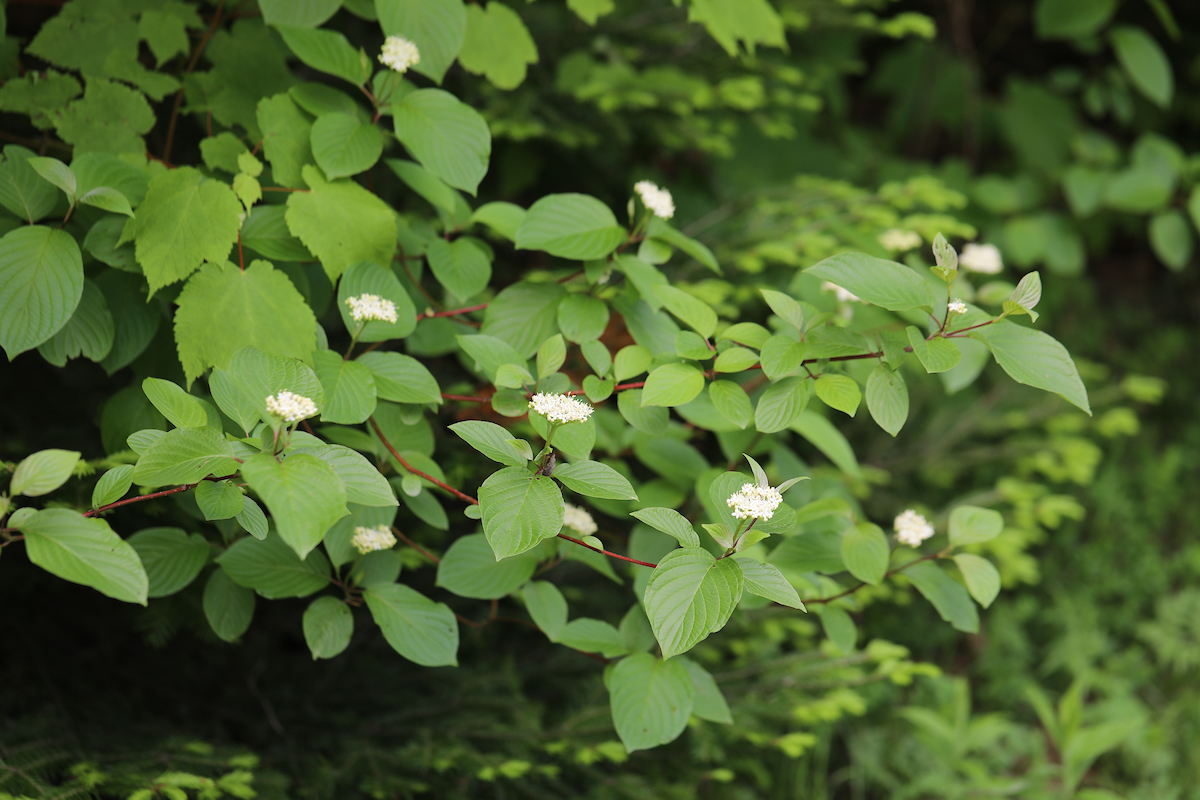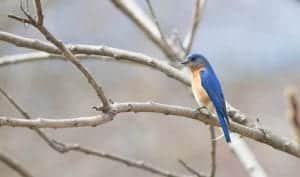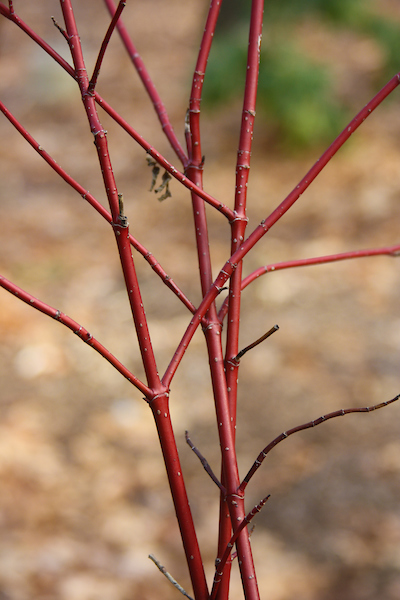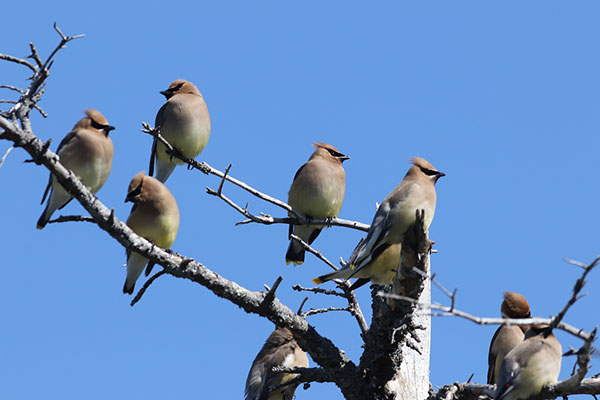
 Our 2024 Bringing Nature Home Plants of the Year, the Swida dogwoods, are an important group of plants for many reasons, but they are especially significant for a number of songbird species that nest in Maine. Red-osier, Silky, and Gray Dogwoods all form hedges and thickets in wetlands and field edges, which creates important habitats for species that utilize thickets and adjacent open habitats, like Eastern Bluebirds. Alternate-leaved and Round-leaved Dogwoods are more often found in forest understories, a layer missing in many forests that often have only a dense canopy and groundcover, and an important habitat for mid-story foragers like Great Crested Flycatchers and Black-throated Green Warblers.
Our 2024 Bringing Nature Home Plants of the Year, the Swida dogwoods, are an important group of plants for many reasons, but they are especially significant for a number of songbird species that nest in Maine. Red-osier, Silky, and Gray Dogwoods all form hedges and thickets in wetlands and field edges, which creates important habitats for species that utilize thickets and adjacent open habitats, like Eastern Bluebirds. Alternate-leaved and Round-leaved Dogwoods are more often found in forest understories, a layer missing in many forests that often have only a dense canopy and groundcover, and an important habitat for mid-story foragers like Great Crested Flycatchers and Black-throated Green Warblers.
Planting or encouraging native shrubby dogwoods (Swida) is one of the easiest ways to help nesting songbirds in Maine.

Planting or encouraging native shrubby dogwoods (Swida) is one of the easiest ways to help nesting songbirds in Maine. These robust, adaptable species grow in a variety of settings and quickly establish stands that provide cover and a branching scaffold for nest-building. All but Alternate-leaved Dogwood have opposite branching, where two buds form at each node on a branch. As two twigs grow from those buds, they form a V-shape with a gap in the middle that is particularly well-sized to support the cup of a songbird nest. This shape is repeated many times in a stand of shrubby dogwoods, providing many opportunities for a nesting songbird to find an ideal spot to build a nest.
Yellow Warblers, American Goldfinches, and Gray Catbirds frequently choose Swida dogwoods for nesting, as do both Alder and Willow Flycatchers. The latter two species point to common associates of most of these shrubby dogwoods: alders and willows. All three groups of plants, in addition to viburnums, sumacs, and roses, frequently grow in wetlands, damp spots, and drainage ditches, and can form dense multispecies thickets. These together make up ideal nesting habitat, with the leaves and matrix of interlocked branches forming cover that is difficult for predators to see into or move through.
Alternate-leaved Dogwood has a slightly different form than the other Swida dogwoods, mostly in that it is the only species that regularly forms a small tree in the forest understory. Round-leaved Dogwood grows in similar places but is usually shorter. Both species can form suitable nesting habitat for forest and edge species that usually nest higher off the ground, like American Robins, Wood Thrushes, Red-eyed Vireos, and Scarlet Tanagers.
In any form, the Swida dogwoods have one thing in common: they support a lot of insects.
In any form, the Swida dogwoods have one thing in common: they support a lot of insects. They are the host plants for around 120 species of Lepidopteran larvae (caterpillars) in Maine, which feed on the green leaves, in addition to the Dogwood Sawfly, whose larvae are only known to feed on dogwood. These insects and their larvae are the most important foods for nesting songbirds and their young. It takes thousands of larvae to raise a young nestling, and most species prefer to nest near a dependable supply, which can only be found on native plant species that are coevolved with these herbivorous larvae.

Dogwoods are also known for producing fruit throughout the summer and fall, which is also important food for a number of nesting species. Cedar Waxwings are the most well-known example, subsisting on mainly fruit for most of their lives. A clattering flock of Cedar Waxwings can sometimes be the best way to find a stand of dogwoods in late summer, descending in large numbers to feast on the white or blue drupes.
Appropriate nest sites and an abundance of insects and fruits are what nearly all songbird species need to successfully nest. Thickets of native dogwood species provide all of these in one place, and can be easily established to create nesting habitat in your yard. Sometimes this is as simple as removing invasive shrubs, like Glossy Buckthorn or Multiflora Rose, which often crowd out existing dogwood plants and support less native insects. If you don’t have Swida dogwoods in your yard already, you can find some for sale at our Native Plants Sale, starting on June 8, or at our Early Bird May Woody Sale on May 1. (Find details on native plants programs here >)Get some in the ground this season and keep birds nesting in your yard for years to come!
Top photo: Swida alternifolia (Alternate-leaved Dogwood). Photo: Dan Wilder
